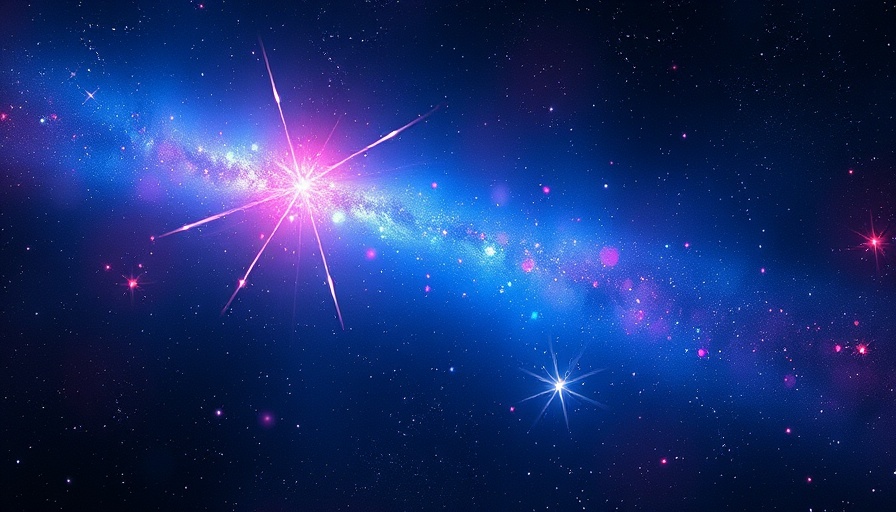
A New Dawn in Astrophysics: The Bullet Cluster Revealed
Navigating the cosmos, NASA's James Webb Space Telescope (JWST) has unveiled a stunning new image of the Bullet Cluster, showcasing the colossal collision of two galaxy clusters. This cosmic event, located 3.9 billion light-years away, serves as a remarkable laboratory for scientists seeking to understand dark matter—an elusive and mysterious component believed to make up a substantial portion of the universe.
Dark Matter's Hidden Nature: What the JWST Reveals
The newly captured image is not just a beautiful view of the cosmos; it corroborates significant findings regarding dark matter's presence and behavior. The image, in conjunction with data from NASA's Chandra X-ray Observatory, depicts hot gas in false-color pink, while the inferred location of dark matter is represented in blue. This separation between the two is particularly intriguing, raising questions about why they do not interact more directly.
Understanding Galaxies Through Collision: Insights From the Past
The Bullet Cluster has long been a focal point in the study of dark matter since its initial imaging by the Hubble Space Telescope in 2006. The previous images indicated a separation between dark matter and ordinary matter, suggesting that dark matter particles interact minimally with each other. This is critical as it gives researchers critical context on the gravitational lensing effects observed in the cluster, shedding light on the mysterious untertale of the universe's composition.
Scientific Importance of Galactic Collisions
Such collisions between galaxy clusters are not just chaotic events; they provide valuable data for scientists. They throw together large amounts of matter in a controlled cosmic experiment, allowing researchers to explore the interactions of dark matter particles. If these particles are revealed to interact more significantly than currently believed, it would change our understanding of cosmology and the very fabric of the universe.
The Future of Dark Matter Research
As JWST continues to capture and analyze more space phenomena, expectations are high for advancing cosmological studies. With its sensitivity and resolution, which far surpasses that of its predecessors, the JWST is likely to unravel many more mysteries surrounding dark matter, challenging existing theories and paving the way for new ones.
In conclusion, the insights from the JWST's examination of the Bullet Cluster emphasize the importance of innovative space technologies in expanding our understanding of the universe and addressing fundamental scientific questions. As investigations continue, the unraveling of dark matter's secrets could lead to groundbreaking advancements in both astrophysics and technology. Keep an eye on upcoming discoveries that may redefine our cosmic perspective.
 Add Row
Add Row  Add
Add 




Write A Comment